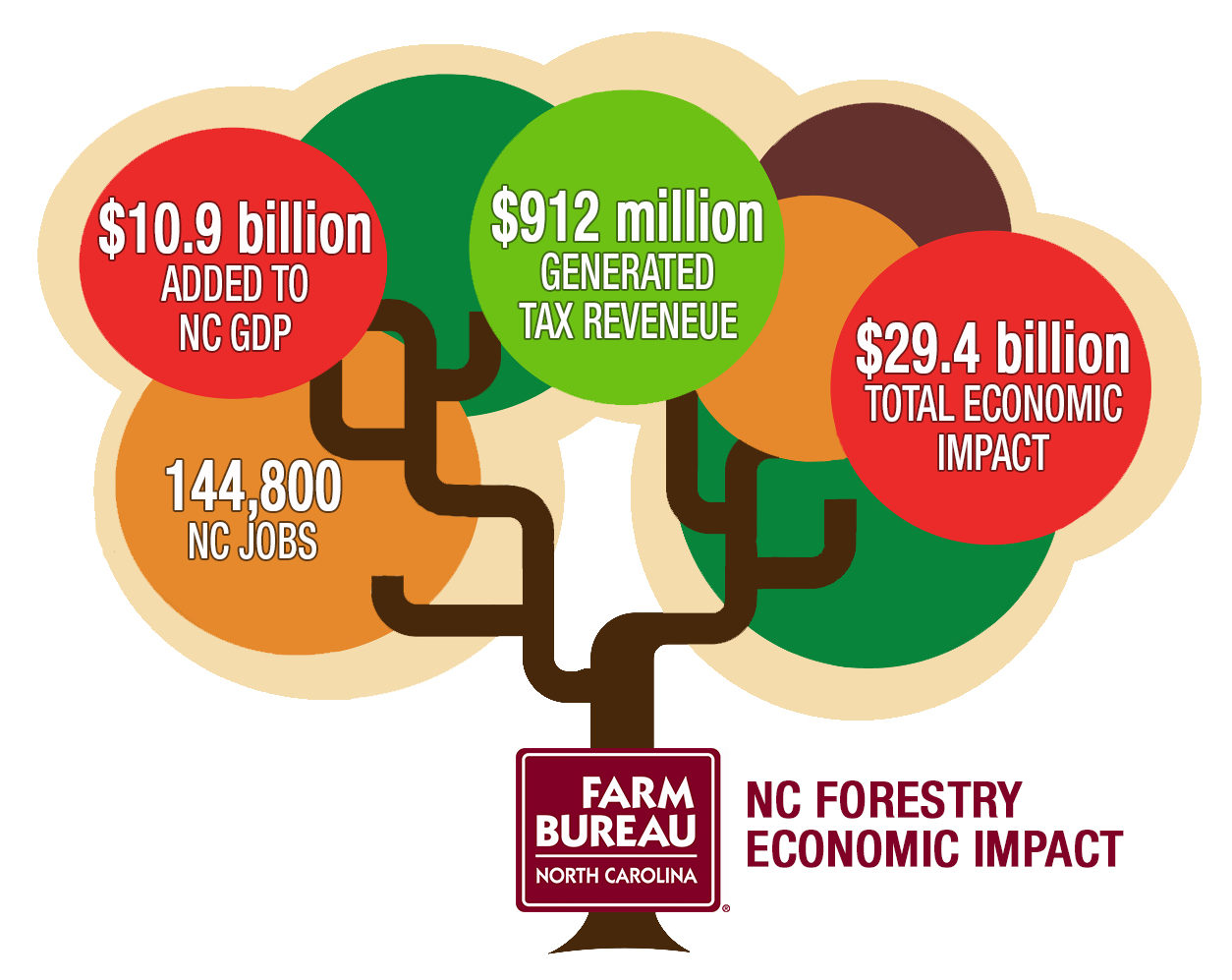Nearly everyone who has traveled a North Carolina highway has been behind a log truck or seen trees being cut down. Maybe this drums up thoughts of a forest industry working to provide everyday items like paper towels and toilet paper, toothpaste, paints, furniture or 2x4s for your next home improvement project. On the other hand, maybe it brings to mind questions about how many trees are being cut down and how this affects the environment. Since yesterday was “Forestry Day in the Legislature”, we’ll take a look at five things that everyone should know about North Carolina’s forestry sector and hopefully debunk a few misconceptions along the way.
- Forestry is Good for the Economy!
The forestry sector plays a significant role in the economic stability of North Carolina. Take a look for yourself.
- Our Forests are Protected!
In addition to providing strong economic value to North Carolina, our forests greatly enhance our quality of life and remain one of our most precious resources. But they must be managed and protected. While managing and protecting to some may mean “hands off”, sound forest management actually means working to reduce the risk associated with insects and disease, wildfire, drought and other conditions that affect the health of our forests. Most of us even grew up hearing Smokey the Bear tell us that forest fires are bad, but prescribed fires by trained professionals are actually good. Smokey even says, “Prescribed fire is one of the most effective tools we have in preventing the outbreak and spread of wildfires. But because prescribed fire is fire, fire management experts are extremely careful in planning and executing a prescribed fire.”
In North Carolina, we are fortunate to have a highly trained workforce of more than 700 individuals at the NC Forest Service that protect, manage and promote forest resources for our citizens and have done so for more than a century. The NC Forest Service is mandated and directed by North Carolina General Statutes to “protect, manage and develop the forest resources of the state. The techniques used to accomplish this mandate involve management of existing resources, development and creation of new and better forests, and protection of these valuable resources. The programs under these objectives are directed at the thousands of private landowners who collectively own 13.8 million acres of the state’s 18 million acres of forest land.”
- Our Forests are Growing!
Currently, North Carolina is home to 18.6 million acres of forest—that’s about 60% of the state. Some of you might be thinking “that’s a lot, but I wonder what that number was 40 years ago.” North Carolina actually grows more trees than are harvested, which has increased the state’s timber inventory by 45% since 1974. Digging a little deeper, North Carolina’s timberlands are growing 50% more softwood and 100% more hardwood than we are currently harvesting.
- Wildlife and Clearcutting
Contrary to popular belief, clearcutting can be an effective management tool for both foresters and wildlife managers. In fact, habitat diversity (open areas, large timber, and vegetation) is essential to many wildlife species. For example, for rabbits, clearcutting can provide an abundance of food plants and brushy conditions for nesting and cover. With the proper use of clearcutting, you can maintain this diversity that provides many positive benefits for game.
Additionally, worries about aesthetics or loss of forests in regard to clearcutting are addressed by the NC Forest service here: “Considering the long-term management of forests, as measured in decades, the relatively short period of time that a clearcut harvest appears unsightly should not be considered as a permanent loss of forests.”
- Water Quality
Forests are extremely effective for maintenance of water quality because they serve as natural sponges, filtering rainfall from the forest and adjoining non-forested areas, and then releasing it slowly into streams and watersheds. However, for a forest to sustain its ability to protect water quality, management is required. That’s why experts in forestry management developed Best Management Practices (BMPs) for the forestry sector.
According to the NC Forest Service, “the cutting of forests, including clearcutting, has not been shown to cause flooding or to make floods more severe” and “forestry BMPs are effective in protecting and sustaining water quality.”
